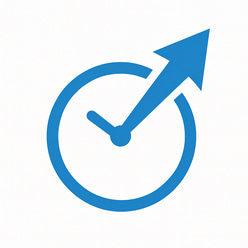How to Quit Your Job and Start a Business (Without Losing Your Mind or Money)
This in-depth guide walks readers through the process of how to quit their job and start a business with confidence and clarity. Covering everything from validating a business idea and building a financial runway to launching while still employed and setting a smart quit date, it offers practical steps to minimize risk while maximizing freedom. The article emphasizes mindset shifts, financial planning, and real-world strategy to ensure readers can transition into entrepreneurship without overwhelm. It ends with an empowering call to action, encouraging readers to take the first step toward building a business—and a life—on their own terms.
CAREER FREEDOM & MONEY
5/19/20253 min read


How to Quit Your Job and Start a Business (Without Losing Your Mind or Money)
Introduction: The Dream of Doing Your Own Thing
More people than ever are searching for how to quit their job and start a business—and it’s not just a trend. It’s a reflection of a deeper desire for freedom, flexibility, and fulfillment. But making the leap from employee to entrepreneur is a major move. It can be exciting, scary, and overwhelming all at once.
In this guide, we’ll walk you through the real-world process of preparing to quit your job, launching your business, and building income the smart way—without reckless risk or regret. This isn’t about hype; it’s about freedom through preparation, strategy, and courage.
Whether you’re starting a service-based business, a product brand, or a content-driven platform, the roadmap below will help you do it with clarity and confidence.
Section 1: Why People Quit to Start a Business
The reasons vary, but the desire to start a business usually stems from:
Wanting more freedom over your time and income
Feeling undervalued in your current role
Pursuing a passion or creative idea
Hitting a ceiling in your career or income potential
Section 2: Know What You're Getting Into
Before you quit, understand that running a business means:
Solving real problems for real people
Wearing multiple hats at first
Embracing discomfort, learning, and failure
Delayed gratification in exchange for long-term upside
Entrepreneurship isn’t for everyone—but if it calls to you, there’s nothing more rewarding.
Section 3: Validate Your Business Idea First
Don’t quit based on a vague idea. Make sure your concept solves a problem, fills a gap, or delivers real value.
Ask yourself:
Who is this for?
What pain or desire does it address?
Are people already paying for a similar solution?
Can I offer it faster, better, or differently?
💡 Use tools like Google Trends, Reddit, Facebook groups, or LowFruits.io to research demand.
Section 4: Build a Financial Runway
One of the top reasons startups fail is running out of money. Before you quit:
✅ Save 3–6 months of living expenses
✅ Eliminate or reduce unnecessary debt
✅ Test your business idea on the side
✅ Track all your expenses with tools like YNAB or Notion
Section 5: Start Your Business Before You Quit
The safest and smartest move is to start your business while you’re still employed.
Here’s how:
Register your business (LLC, sole prop, etc.)
Set up a separate business bank account
Build a landing page or website
Offer your service to beta clients or test a digital product
Create a simple content plan to build online visibility
Section 6: Set a Realistic Quit Date
Give yourself a clear timeline—this creates urgency without chaos.
✅ Set a 3–12 month window based on savings, progress, and traction
✅ Make a “Quit Checklist” of what needs to be done before you leave
✅ Inform your employer professionally when it’s time to go
Section 7: Structure Your Business for Success
Once you're full-time, your business becomes your job—with freedom and responsibility.
Key focuses:
Time-block your week like a CEO
Set up systems (e.g., proposals, invoicing, onboarding)
Define clear offers and customer journeys
Build an email list and engage your audience
Reinvest profits into tools, training, or help
Section 8: Expect (and Embrace) Growing Pains
No matter how prepared you are, you’ll face:
Slow sales
Fear of failure
Doubt from friends or family
Fatigue from doing it all
That’s normal. Don’t take these as signs to quit—take them as signals you’re growing.
Section 9: Know When to Pivot and Scale
After traction, you’ll hit a new stage: growth. Focus on:
Narrowing your niche further
Raising your prices or adding offers
Hiring help or using automation tools
Investing in mentorship or coaching
Freedom isn’t found in doing more—it’s in doing better.
Conclusion: The Freedom is Real—If You Prepare for It
Quitting your job to start a business isn’t a leap of faith—it’s a calculated move with a personal mission. Done right, it leads to a more fulfilling, autonomous life.
Start with validation. Build your runway. Launch smart. And step into the role of creator, not just employee.
Call to Action: Start Your Transition Plan Today
Your dream business won’t build itself, but it can absolutely start today:
Write down 3 problems you’d love to solve
Identify one offer you could test in the next 30 days
Create a basic outline of your “quit plan”
Subscribe to Beyond9to5Life.com for weekly strategy and real-world tips
You're not just quitting a job—you're building a life on your terms. Let’s make it happen.
Related Articles:
Top High-Income Skills to Master Before You Take the Leap and Quit Your Job
Is It Time to Say Goodbye? A Comprehensive Guide to Knowing When to Quit Your 9-5 Job
Mastering the Art of Leaving: A Comprehensive Job Quit Plan to Minimize Risk
Freelancing vs Entrepreneurship: Which Path to 9–5 Freedom Is Right for You?
Beyond9to5Life.com
"Empowering Others Is The Most Effective Form of Service to Humanity"
Connection
Momentum
info@beyond9to5life.com
772-228-1494
© 2025. All rights reserved.
